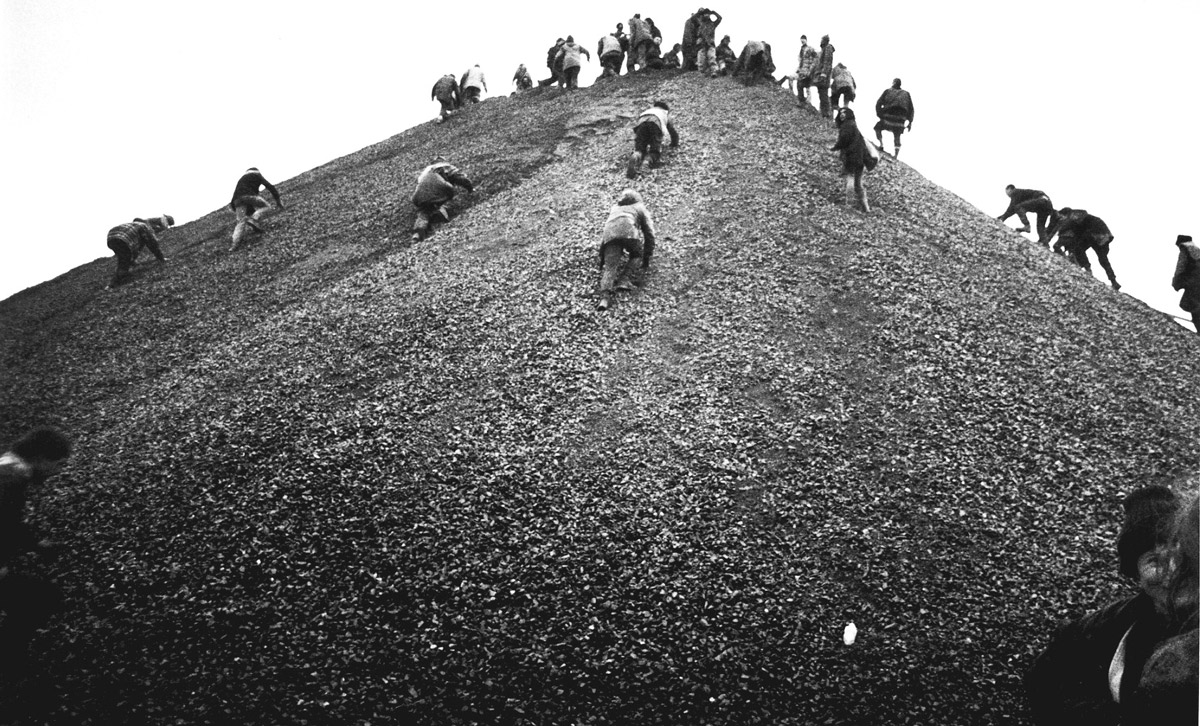Road Wars

A Maul On The Mound
Is the county of Somerset losing its reputation for tranquillity and calm? You bet it is. Richard Dixon joined Earth First!’s super quarry shut down at Whatley Quarry.
Squall 12, Spring 1996, pg. 39.
Whatley Quarry in Somerset recently hosted the culmination of a long-running feud between environmental activists and the road-building and quarrying conglomerate, Hanson plc. On the 4th December 1995, over 50 arrests were made as protesters closed down the quarry.
Whatley roadstone quarry is already one of the largest in Europe; a mile long, 290 acres and 100 metres deep. Yet Arc/Hanson wish to substantially expand it, eroding the important Mendip Hills aquifer and even, it is said, threaten the thermal springs at Bath, some 10 miles distant. The product of this destruction is very cheap roadstone. Quarry rates of £2 to £3 per tonne make a very ready fuel for ambitious road-building schemes. The balance of output goes to the reinforced concrete industry - that other unsustainable blot-all bane of contemporary urban life.
A pre-dawn raid by some 400-450 allegedly pre-briefed December campers saw the 5 million tonne per annum destruction machine at Whatley grind to a shuddering halt. Local wildlife sites, rural residents, stunning landscape and not inconsiderable heritage features gained an unexpected four day reprieve from the shot drilling, blasting, rock crushing and 14,000 tonnes per day road and rail cartage.
Whatley is more than just about a damn great hole blown out of a precious countryside. It is about government policy towards countryside, road-building and the whole urban environment.
As dawn broke, the occupation of Whatley Quarry was revealed to the massed media. A banner hung from a large crane proclaimed: “Under New Management!” Abseilers tended its ripples and crisply provided sound-bites to bellowing, urgent and stiff-necked journalists below. The two quarry gates were picketed and to underline the fact that Whatley quarry was (albeit temporarily) closed, a manned scaffolding tripod straddled the sole but very significant rail line out of the quarry.
The blockade was complete. The occupation had commenced. The bagpipes that had been a bit blowy and squeaky at the time of the rush at the gates now had more melody and leisure with flute and drums accompaniment. It was carnival at the countryside dismemberment camp.
Of many key battles and skirmishes during the war of Whatley, the ‘convergence on the conveyors’ ensured that crushed stone was not moved around site. A number of spectacular aerial arrests were made as protesters risked life and limb clambering on the black, shiny and enormously tall stone conveyor belts. As the action progressed protesters grouped at the top of a stock-pile of stone and proved, for a time, resolutely immovable. It was at this ‘maul on the mound’ where the majority of arrests occurred.
Protesters who wanted to “check up on the paperwork” were frustratingly denied access to the offices by truncheon-wielding blue coats. Sit-downs and lock-ons largely prevented vehicles moving.
The heavy security applied against the occupation was justified by the company on grounds of protecting demonstrators from injuring themselves in the quarry. In the end, the only injury reported occurred when a police vehicle ran over a young man’s legs, mercifully not breaking them. This unlucky event, not surprisingly, caused a very substantial change in ARC/Hanson’s press statements and, for a time, company management assured TV viewers that they were sure that “had the demonstrators read the company planning application, the environmental activists would be supporting the proposed quarry expansion,” which, even in TV media land, stretched credibility to hitherto unknown elastic heights.
Bath City Council, Mendip District Council, local parish councils and most of the nation’s major environmental groups (having read the quarry expansion planning proposal) have formally objected to Hanson’s plans and are calling on Secretary of State for the Environment, John Gummer, to hold a public inquiry in to the need and/or effects of production at Whatley rising from 5 million tonnes a year to 10 million, giving it eight times the annual output of ARC’s next largest UK quarry.
In the meantime it may be assumed that environmental activists and quarry managers alike may be concentrating on the benefits and drawbacks of the closure of Whatley quarry and both parties may assume that as 50 plus CJA victims proceed through the judicial bureaucracy towards potential environmental martyrdom, the bagpipes, flutes and drums may be heard in ‘tranquil’ Somerset again.
Stop Press
Environment secretary John Gummer announced in February he would not hold a public inquiry into the expansion of Whatley Quarry. He said: “It is right in about all cases that initial decisions should be taken by the local authority.”
Somerset Council have indicated they are minded to grant permission subject to detailed conditions.
Related Articles
Legislation Endorses Superquarrys - Hundreds of disused quarries could be brought back into use, some massively extended - Squall 12, Spring 1996
For a menu of many other Squall articles about the Anti-Roads Movement, including protest camps, Reclaim The Streets and more click here
